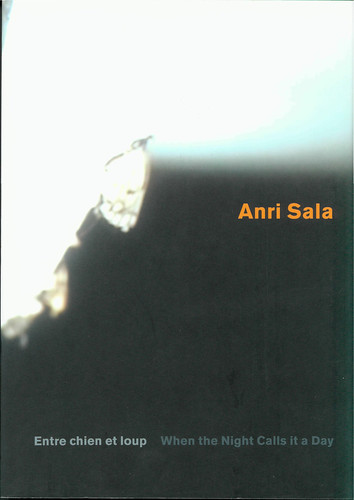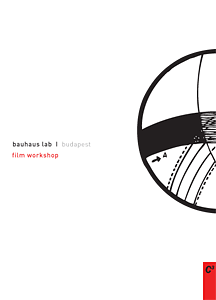Anri Sala: Entre chien et loup / When the Night Calls it a Day (2004) [French/English]
Filed under catalogue | Tags: · art, film, sound recording, video art

Cette publication a été réalisée à l’occasion de l’exposition de Anri Sala Entre chien et loup au Musée d’art moderne de la Ville de Paris du 25 mars au 16 mai 2004. Pour la première fois, ce livre témoigne de la diversité de l’oeuvre d’Anri Sala, qui s’est imposé très vite comme un des acteurs majeurs de l’art d’aujourd’hui. Anri Sala, né à Tirana, en 1974, explore le politique dans un travail où la composante esthétique reste essentielle.
Contributions by Suzanne Pagé, Laurence Bossé, Hans Ulrich Obrist, Julia Garimorth, Patricia Falguières, Jacques Rancière, Israel Rosenfield, Alexandre .. Daniel Costanzo, Molly Nesbit, Philippe Parreno
This publication accompanies the exhibition of Anri Sala “Entre chien et loup” held by Musée d’art moderne de la ville de Paris from March 25 until May 16, 2004.
Coordination Julia Garimorth
Publisher Verlag der Buchhandlung Walther König, Cologne, 2004
ISBN 388375806X, 9783883758060
200 pages
PDF (no OCR; updated on 2012-7-14)
Comment (0)Miklós Peternák, Éva Kozma (eds.): Bauhaus Lab, Film Workshop, Budapest (2010) [English/Hungarian]
Filed under book | Tags: · experimental film, film, light, photography, sound recording

Publication from the workshops and presentations dedicated to László Moholy-Nagy, held in 2009 in Budapest.
Publisher C3 Center for Culture and Communication, Budapest, 2010
ISBN 9789638879202
85 pages
PDF (updated on 2012-8-3)
Comment (0)Michel Chion: The Voice in Cinema (1984–) [EN, ES]
Filed under book | Tags: · cinema, film, film history, film sound, film theory, sound recording, voice

“How can a voice whose source is never seen—such as Hal in 2001: A Space Odyssey or the mother of Norman Bates in Psycho—have such a powerful hold on an audience? When does “synchronized sound” fail to link bodies to their voices, and how do such great stylists of sound film as Jacques Tati, Kenji Mizoguchi, and Marguerite Duras deploy the power of the voice?
In this brilliant essay, Michel Chion, internationally cited authority on the history and poetics of film sound, examines the human voice in cinema. The Voice in Cinema begins with the phenomenon of film’s hidden, faceless voices and their magical powers, particularly in the context of Lang’s Testament of Dr. Mabuse. Chion then explores subjective voices, bonding and entrapment by telephone, voice-thieves, screams (male and female), siren calls, and the silence of mute characters-all uniquely cinematic deployments. In conclusion, Chion considers “the monstrous marriage of the filmed voice and body” as embodied in Norman Bates. Claudia Gorbman’s fluent translation retains Chion’s sophisticated and accessible style, introducing readers to a distinct and paradigm-changing voice on film.”
First published as La voix au cinéma, Cahiers du Cinema, Paris, 1984.
English edition
Edited and translated by Claudia Gorbman
Publisher Columbia University Press, 1999
ISBN 0231108222, 9780231108225
183 pages
Review: Tim Anderson (Echo, 2000).
Publisher (EN)
The Voice in Cinema (English, trans. Claudia Gorbman, 1999, updated on 2020-9-19)
La voz en el cine (Spanish, trans. Maribel Villarino Rodriguez, 2004, added on 2020-9-19)

